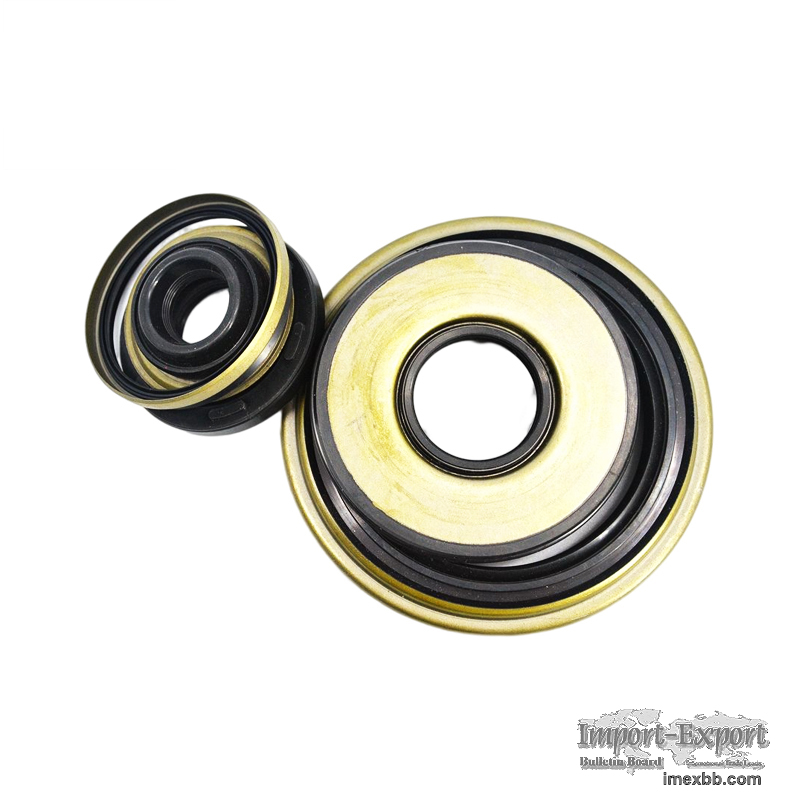 |
 |
Home > Offers to Sell > Others & Excess Inventory > Others
| Contact: | junyingliu |
|---|---|
| Company: | Xingtai Shanfeng special rubber products Co., Ltd |
| Hetou Industrial Zone, Renze District, Xingtai City, Hebei Province | |
| Xingtai City, Hebei | |
| China | |
| Phone: | 18713908608 |
| E-Mail: | |
| Date/Time: | 6/20/23 5:49 GMT |
NQKSF Dustproof Automotive Oil Seals
Automotive oil seals are crucial components that help prevent fluid leakage
and maintain the proper functioning of various systems within a vehicle. In
this article, we will discuss the recommended frequency for replacing
automotive oil seals, taking into consideration factors that may impact their
lifespan.
The Lifespan of Automotive Oil Seals:
Determining how often automotive oil seals should be replaced depends on
several factors, including the specific seal type, operating conditions, and
maintenance practices. While it is challenging to provide an exact timeframe
for replacement, the following factors should be considered:
Wear and Tear: Over time, automotive oil seals can experience wear and tear
due to constant exposure to heat, pressure, and friction. The condition of the
seals should be regularly inspected for signs of deterioration, such as cracks,
tears, or loss of elasticity. If significant wear is detected, replacement may
be necessary.
Maintenance and Lubrication: Proper maintenance, including regular oil
changes and the use of high-quality lubricants, can significantly impact the
lifespan of automotive oil seals. Adequate lubrication helps reduce friction
and heat, minimizing the strain on the seals. It is crucial to follow the
manufacturer’s recommended maintenance schedule and ensure that seals are
adequately lubricated to prolong their lifespan.
Environmental Factors: Environmental conditions can also affect the
longevity of automotive oil seals. Extreme temperatures, exposure to chemicals,
and harsh operating conditions can accelerate wear and deterioration. Vehicles
operating in severe conditions may require more frequent seal replacements
compared to those in milder environments.
I believe that a proactive approach to maintenance and regular inspections
is crucial for determining the optimal replacement frequency for automotive oil
seals. It is advisable to consult the vehicle’s manufacturer guidelines and
follow their recommended maintenance schedule. Additionally, monitoring the
performance of the seals and addressing any signs of wear or leakage promptly
can help prevent more significant issues down the line.
Furthermore, the quality of the oil seals used can have a significant
impact on their lifespan. Investing in high-quality seals from reputable
manufacturers can help ensure their durability and reliability. While there is
no fixed timeframe for replacement, it is important to prioritize regular
maintenance and take a proactive stance in monitoring the condition of the
seals to maximize their lifespan and prevent potential leaks.
Conclusion:
The frequency of replacing automotive oil seals varies depending on several
factors, including wear and tear, maintenance practices, and operating
conditions. Regular inspections and adherence to manufacturer guidelines for
maintenance are key to determining the optimal replacement timeframe. By
monitoring the condition of oil seals and addressing any signs of wear or
leakage promptly, vehicle owners can ensure the longevity and reliability of
their automotive oil seals. Investing in high-quality seals and practicing
proactive maintenance can significantly contribute to the overall performance
and efficiency of the vehicle’s systems.
Minimum Order: 100 pieces
SOURCE: Import-Export Bulletin Board (https://www.imexbb.com/)
Similar Products:Not exactly what you are looking for? Post an Offer to Buy!
![]()
© 1996-2010 IMEXBB.com. All rights reserved.
|
|
|





